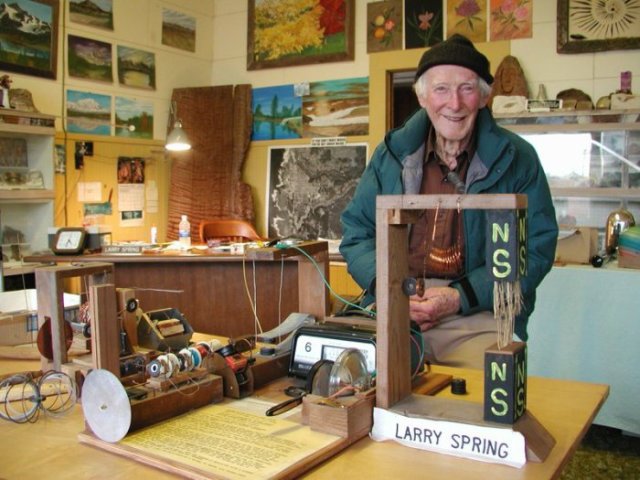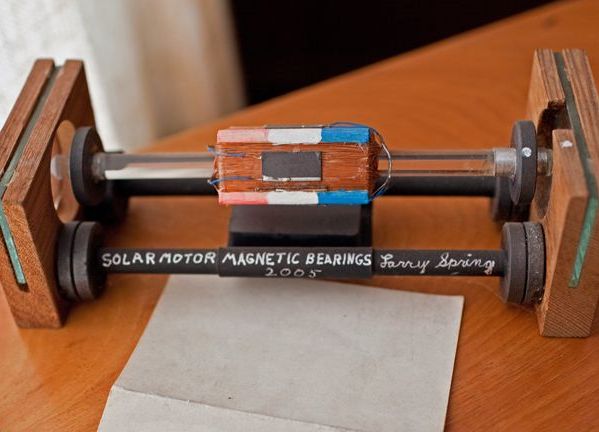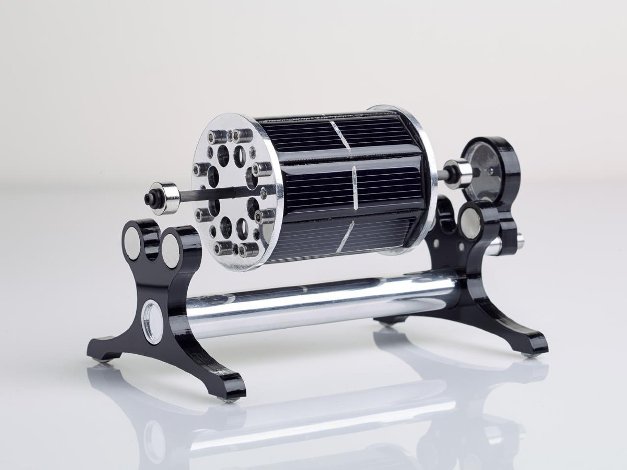Categories: Featured Articles » Interesting Facts
Number of views: 22073
Comments on the article: 1
Mendosin motor - device and principle of operation, features of use
Mendoza motor (Mendocino brushless magnetic levitation solar motor) is named after Mendocino County, on the coast of California, USA. The inventor lives here Larry springwho invented this motor on July 4, 1994. This model stood for a long time on the windowsill of Larry’s shop, and after a while it became a real attraction of the district, because the rotor rotated and rotated, being suspended literally in the air.
Spring motor, like any other motor, consists of a rotor and a stator. However, the Mendocino motor is not an ordinary motor. The stator of the Mendocino motor is a stand with a permanent magnet and with a magnetic support, and the rotor is a dielectric frame with a set of solar panels mounted on top of coils wound on rotor levitating over magnetic supports.

Photons of sunlight activate solar panels, which in turn generate an electric current. The current passes through the coils wound on the rotor, and the magnetic fields of the coils, interacting with the magnetic field of a permanent magnet (stator), cause the rotor to rotate.
More precisely, the Ampere force from the side of the magnetic field of a permanent magnet pushes the conductors of the coils through which current flows. And since the coils receive power in turn, then they are pushed out in turn.
Thus, the Mendocino motor can be classified as a brushless low-power magnetic levitation solar motor - a type of brushless electric motor with a magnetic stator and with rotor excitation windings powered by solar energy.
A small model converts just a couple of watts of power, and for industrial purposes this, of course, is not enough, but as a visual layout - it will do.

The rotor mounted on a metal shaft has a square cross-section, so solar panels are comfortably placed on the four sides of the rotor. The rotor is horizontal, and permanent ring magnets are installed at the ends of the shaft. It is thanks to these magnets on the sides of the rotor that levitates, reducing friction to almost zero.
The magnets at the ends of the rotor shaft hover over the magnetic supports, holding the rotor in suspension. A magnet located directly below the rotor is necessary to create a magnetic field of the stator, from which the rotor could repel for rotation.
When sunlight falls on one side of the rotor, one of the solar panels mounted on the rotor generates an electric current that is sent to the rotor winding located near the stator magnet. The current rushing into the winding creates a magnetic field of the corresponding pole of the rotor, and the rotor is repelled by this winding from the permanent magnet of the stator.
Thus, the rotor rotates - each winding alternately receives power and is repelled: the next solar cell is exposed to light, current is generated, the winding is excited - the rotor rotates further. As long as enough sunlight falls on the rotor, the motor will spin. This is a kind of analogue of a commutator commutator motor, only “light”.

As for the rotor suspension, it is made with permanent magnets in order to minimize friction, because the motor power is extremely small to overcome any significant friction, so the friction is left only about the air. But on one side, the rotor axis is nevertheless supported by a wall to give the rotor additional stability, to create a condition of stable equilibrium.


In this condition, the motor can work for months and years, provided that at least a little light falls on it.
So do Mendosin motors different lovers. In the original Larry Spring model, the axis from two sides was supported by glasses for pointed heels.
See also at bgv.electricianexp.com
:
